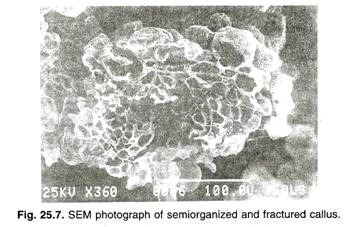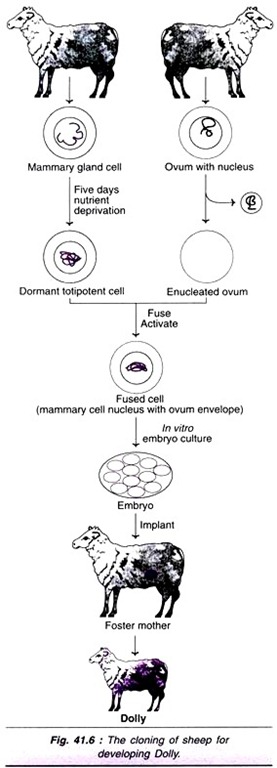ADVERTISEMENTS:
Circulatory System of Human Beings!
Blood:
Blood, as you know, is a liquid connective tissue that circulates in a closed system of blood vessels.
An adult man has about five to six liters of blood, while a woman, on an average, has about one liter less.
ADVERTISEMENTS:
Our blood consists of (i) solid elements—which include red blood corpuscles (RBCs), white blood corpuscles (WBCs), and blood platelets, and (ii) liquid element—the plasma.
The corpuscles comprise about 45% and the plasma about 55% of the volume of blood.
Plasma:
Plasma is a straw-coloured liquid in which the RBCs, WBCs and platelets float. It contains mainly water, in which are dissolved various substances such as plasma proteins, food substances (amino acids, glucose, and fats), nitrogenous compounds and ions of sodium, potassium, calcium, magnesium and phosphorus.
Blood corpuscles:
Blood is red in colour due to the presence of RBCs. The RBCs contain the red-coloured respiratory pigment haemoglobin. This iron-protein compound transports oxygen from the lungs to the tissues. RBCs also transport carbon dioxide. WBCs protect the body from infection. Platelets help in the clotting of blood.
ADVERTISEMENTS:
Visit a diagnostic centre. Give your blood sample. Get it checked for the level of haemoglobin.
The normal range of haemoglobin in humans is 120-180 g/L, or 12-18 g/L, of blood. Check your blood report to see if your haemoglobin level fails in this range. But haemoglobin levels also depend on age, sex and ethnic values of a place. For example, females have a lower normal value of haemoglobin level than males.
A below-normal level of haemoglobin may indicate anemia due to a number of possible causes. Low haemoglobin level could be from actual loss of blood from haemorrhage, vitamin deficiencies, lack of iron in the diet or a disease. This indicates that the person’s cells are not getting enough oxygen for energy production. Such anemic persons always feel tired and weak.
You can even obtain the normal range of hemoglobin level in animals such as cows, buffaloes, goats, etc., by visiting a veterinary clinic. This value is lower in these animals than in humans. The normal hemoglobin level in cows lies in the range of (5.9 ± 1.54) g/L of blood.
Blood dotting by platelets:
You must have noticed that after a cut the skin bleeds for a while, and then the blood thickens to form a clot. This process takes place as a result of a series of reactions in the blood. These reactions are started by the release of an enzyme by the circulating platelets.
The clot, which forms at the point of the wound, is a microscopic network of insoluble fibrous protein. It minimizes the loss of blood. If blood is lost, it leads to a loss of pressure by the pumping heart.
Functions of blood:
1. Transport of respiratory gases:
Blood carries oxygen from the lungs to the tissues. It also carries carbon dioxide from the tissues to the lungs.
2. Transport of nutrients:
ADVERTISEMENTS:
Absorbed in the small intestine enter the blood capillaries. Blood carries these nutrients and distributes them to all parts of the body.
3. Transport of waste products:
Waste products of the body, such as urea, uric acid, etc., are carried by blood to the excretory organs.
4. Regulation of water content of cells:
ADVERTISEMENTS:
Blood regulates the water content of the cells when the water content in cells increases, blood takes up the excess amount of cellular water. Blood provides water to cells when they need it.
5. Regulation of body temperature:
Increased body temperature resulting from the excess respiration of a particular tissue is equalized by circulation of blood.
6. Defence against infection:
ADVERTISEMENTS:
Blood protects the body against infection.
7. Prevention of bleeding:
Clotting blood prevents excess bleeding.
Blood Vessels:
Three types of blood vessels, namely, arteries, veins and capillaries, are involved in blood circulation. They are all connected to form one continuous closed system.
Arteries:
ADVERTISEMENTS:
The arteries are wide, elastic and thick-walled vessels as they carry blood away from the heart to the limbs and organs of the body. They have thick, elastic walls to withstand the high pressure of the blood emerging from the heart.
Veins:
Veins bring back blood from the tissues and organs to the heart. The blood in veins flows under less pressure than that in arteries. Therefore, veins do not have thick walls. But veins can accommodate more blood. Veins have valves that allow blood to flow in one direction only.
Capillaries:
Arteries branch out into smaller and thinner blood vessels called arterioles. These divide into still smaller vessels to provide blood to all the cells. The thinnest blood vessels are called capillaries. Their walls have just one layer of squalors cells.
These walls are permeable, so that water and dissolved substances pass in and out, exchanging oxygen, carbon dioxide, dissolved nutrients and waste products with the tissues around the capillaries. The capillaries form a dense network, reaching out to each and every part of the body. The flow of blood is very slow in capillaries. They join to form venules and veins, which return blood from organs and tissues to the heart.
The human heart:
Structure:
The heart is a muscular, conical and dark red organ that plays the role of a pump in the circulatory system. Its pumping action maintains the circulation of blood.
ADVERTISEMENTS:
In man, the heart weighs about 0.43 per cent of the body weight. It is located in the middle of the thoracic cavity, but its apex is tilted towards the left side. The heart is enclosed in the pericardium, a tough, inflexible membrane. Between the heart and the pericardium is a fluid which reduces the friction produced during heartbeat.
The heart is made up of cardiac muscles. These muscles contract with considerable force, squeezing the blood out into the arteries. The heart beats nonstop throughout one’s life. It is due to the rhythmic contraction and relaxation of the heart muscles. There are four chambers in the heart—two atria, with thin walls, and two ventricles, with thick walls.
Working of the heart:
Blood from different parts of the body comes to the right atrium when it expands. This impure blood is brought from the upper part of the body through the superior vena cava and from the lower part of the body through the inferior vena cava.
As the right atrium contracts, the blood goes to the right ventricle, which dilates. The atrioventricular aperture is closed by a valve after the blood transfer. Valves prevent the backflow of blood when the atria or ventricles contract.
When the right ventricle contracts, the blood is forced out to the lungs for oxygenation through the pulmonary artery, guarded by another valve. In the lungs, there is an exchange of oxygen and carbon dioxide. After the blood has received oxygen from the lungs and given off carbon dioxide, the oxygenated blood returns to the left atrium.
Pulmonary veins bring this oxygenated blood from the lungs to the left atrium, as it relaxes. When the left atrium contracts, blood is transferred to the left ventricle, which expands. The aperture between the left atrium and left ventricle is guarded by a valve. The wall of the left ventricle is three or four times thicker than the wall of the right ventricle, as it pumps blood to the body.
ADVERTISEMENTS:
When the left ventricle contracts, the oxygen-rich blood is pumped into the aorta for circulation to different parts of the body. The opening of the aorta is also guarded by a valve. Deoxygenated blood is collected from different parts of the body by small veins. These open into larger veins, which bring the blood back to the right atrium.
Cardiac cycle:
One sequence of the filling of the heart with blood and its pumping is called the cardiac cycle. The phase of contraction of the ventricle is called systole and its relaxation phase is called diastole.
Blood pressure:
As blood flows, it exerts a force on the walls of the blood vessels. This is much greater in the arteries than in the veins. The pressure of flow of blood in the aorta and its main branches is defined as blood pressure. The heart has to develop a high pressure so that blood can be pumped through the arteries, capillaries and veins.
During the ventricular contraction, or systolic phase, it is equal to that exerted by a column of 120 mm of mercury. During the ventricular relaxation, or diastolic phase, it is about 80 mmHg.
Thus, the normal blood pressure is said to be ‘120/80’. However, the blood pressure varies from person to person and is affected by age, sex, heredity, physical and emotional states, and other factors.
An instrument called sphygmomanometer is used to measure blood pressure. Abnormally high blood pressure is called hypertension. It may be associated with a disease or may occur due to anxiety.
During hypertension, the arterioles get constricted and increase resistance to blood flow. High blood pressure can cause the rupture of blood vessels, internal bleeding or stroke. If a blood vessel is ruptured in the brain, that part does not get blood, oxygen and nutrients, and loses its function.
The Lymphatic System:
Lymph is another type of fluid that takes part in transportation:
Blood containing oxygen and food flows under tremendous pressure in the arteries, which divide into arterioles and eventually into capillaries.
When the blood from an arteriole enters a capillary, it is under so much pressure and the capillary walls are so thin that a clear liquid is forced out of the capillary walls into the spaces between the surrounding cells.
This liquid is called tissue fluid. Tissue fluid carries with it oxygen, food and other useful substances to the cells. It also takes away carbon dioxide and waste products from the cells.
If tissue fluid were to accumulate in the tissues and organs, it would cause swelling. So, it is returned to the bloodstream through another system of vessels, called the lymphatic system. The lymphatic system consists of lymph, lymph vessels and lymph nodes.
Most of the tissue fluid drains into lymph vessels and flows as lymph. Lymph is similar to blood except that it does not have RBCs and blood platelets, and has a lesser amount of proteins. Therefore, lymph is colourless or slightly yellowish and is similar to blood plasma.
The lymphatic system maintains the balance between tissue fluid and blood. Lymph carries digested fat from the intestine and drains excess fluid from the intercellular spaces back into the blood.
Before lymph enters the blood, it passes through a number of lymph nodes. These are small globular masses of lymphatic tissue. Lymph nodes produce WBCs that prevent infection.



